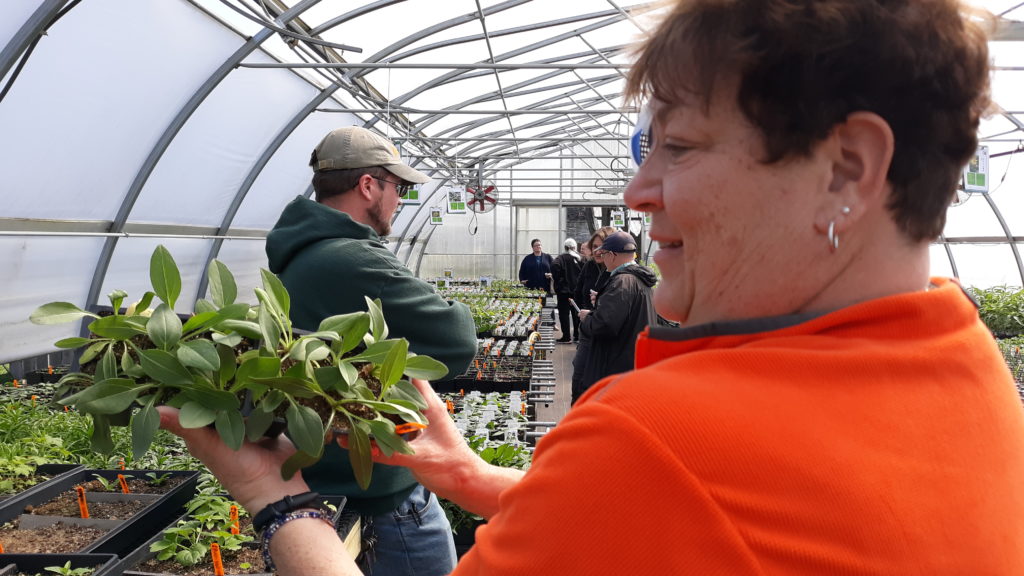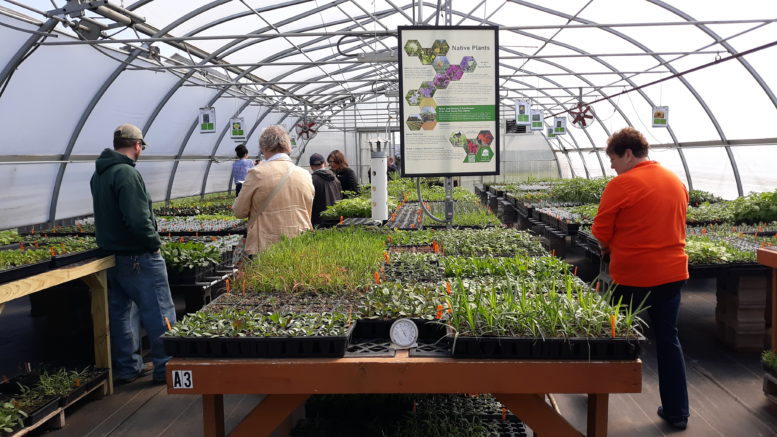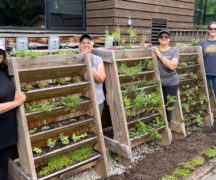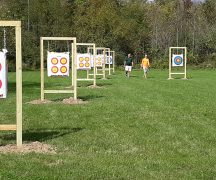By JAN LARSON McLAUGHLIN
BG Independent News
Peeking up from the pots are promises of colorful flower beds. There are Lupines, Columbine, Coreopsis and Brown-eyed Susans – sturdy plants made to withstand this climate.
Some native plants – those that grew in this region prior to European settlement – are sometimes hard to come by.
But this spring, local gardeners won’t have to go far from home to find native flowers and grasses to plant in their yards.
This year the Friends of Wood County Parks is selling all native plants at the group’s spring plant sale on May 7. No more hothouse or hanging plants, according to Candace Weis, president of the organization.
“There is so much demand,” Weis said. Native plants have sprouted up in popularity since they are durable and many attract butterflies and bees. Because of those traits, many native plants are hard to find during spring planting season, Weis said.
“They’ve become more popular because of the declining bee population,” she said.
But on Tuesday, Weis and other park officials were surrounded by close to 80 different varieties of native plants in the park district’s greenhouse at the Reuthinger Memorial Preserve in northern Wood County.

Though park board President Sandy Wiechman admitted she didn’t need more plants, she couldn’t help eyeing the flowers.
“I love it,” she said of the annual plant sale. “They are healthy plants. I’ve never gotten a plant that’s not healthy. We’re so lucky that they have so much passion for plants,” Wiechman said of the park staff.
Eric Scott, the park district’s stewardship coordinator, is one of those staff members who has been babying the plants in the greenhouse. He strolled by pointing out the Purple Love Grass, Spiderwort, Great Lakes Goldenrod and many other native plants.
The giant sunflowers, which will tower at 7-feet or more, are already stretched over a foot tall. There are many plants designed to attract butterflies, bees and hummingbirds – like the green milkweed.
Native plants are more likely to come back the next year since they sustain climate swings, and they tend to require less watering, Weis said.
“Their roots go all the way down,” she said.
Some of the plants taking root in the Reuthinger greenhouse are sold to groups like the Lucas County Soil and Water District, Scott said. Others are planted in the county parks – at quite a savings for the park district.
And many will be part of the Friends of Wood County Parks fundraiser on May 7, from 9:30 a.m. to 1 p.m. at the Wood County Fairgrounds. For the first time, credit cards will be accepted.
An early sale for Friends members will be held May 6, from 9:30 a.m. to 1 p.m.
According to the Friends of Wood County Parks, the benefits of using native plants in landscaping include:
- They slow down soil erosion and improve water quality. When heavy rain events occur, soil and nutrients from streams and riverbanks can be quickly swept away by rushing waters. Storm water runoff is one of the leading causes of nutrient accumulation in large bodies of water, which can lead to algal blooms. Native plants have extensive root systems that help stabilize and enrich a wide variety of soils. Their roots can grow up to 15 feet long, compared to common turf grass roots that are just several inches deep.
- They help reduce air pollution. Native plants sequester or remove carbon from the air. Once established, native plants require little to no maintenance because they have adapted to local soils over thousands of years. Without the need for extra water, fertilizers or pesticides, these plants are a cost-effective and environmentally conscious selection for landscapes or gardens.
- They support pollinators with food, nesting sites and shelter. Just as native plants have adapted to local soil conditions, there are insects, birds and other animals which have adapted to native plants as sources of food, shelter and places to raise offspring. Just like Monarch butterflies and milkweed, and Lupine and Karner Blue butterflies, many insects depend on one single plant to provide many of their needs.
- They help diversity and support food supplies. While honeybees are the most well-known pollinators, native bees are the most abundant. Native bees provide significant pollination of food crops.





